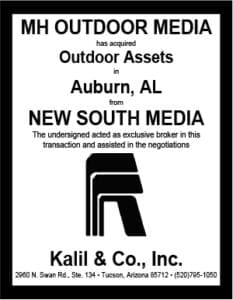
By Richard Rothfelder. Rothfelder Falick
Now that we’re finally transitioning to a new presidential administration, and regardless of your politics, it’s appropriate to acknowledge one of President Trump’s most impactful actions while in office, namely his appointments to the federal judiciary. Of course, Trump has solidified the conservative majority of the Supreme Court, with his appointments of Justices Barrett, Kavanaugh, and Gorsuch. In addition, he has added hundreds of federal district trial and circuit appellate judges, who were usually selected from a list submitted to him by the Federalist Society, a conservative leaning attorney advocacy group. And, while partisan control of the Presidency and Congress will continue to change, Trump’s long lasting legacy will be these federal judicial appointees, who will serve for life.
The conservative federal judiciary will also have a significant impact on First Amendment sign code challenges. The Supreme Court’s seminal content-based First Amendment decision in Reed vs Gilbert was authored in 2015 by Justice Thomas, perhaps the Court’s staunchest conservative. Trump’s appointment to the Court of Barrett, Kavanaugh, and Gorsuch now makes for at least five reliable conservative votes, as demonstrated in the November 25th opinion in Roman Catholic Diocese of Brooklyn vs Governor Cuomo, holding that the Religious Liberty Clause of the First Amendment prohibited New York from imposing Covid-related restrictions on the numbers attending religious services. This conservative majority on the Supreme Court tends to interpret the Constitution strictly and literally, often in the face of well-meaning bureaucrats and local governments, whether attempting to promote public health or prevent sign clutter.
The conservative leanings of an increasing number of the lower federal appellate courts have also led to scrutiny of content-based sign regulations, including in the last four years the invalidation of the Highway Beautification Acts in Texas, Tennessee, and Kentucky due to their on-premise/off-premise sign distinctions. The Fifth Circuit Court of Appeals also held on August 25th in Reagan and Lamar vs City of Austin that the Austin Sign Code was content-based and violated the Free Speech Clause of the First Amendment, as it permitted digital displays for on-premise but prohibited them for off-premise signs. Since then, on October 28th, the Firth Circuit, which covers Texas, Louisiana, and Mississippi, demonstrated once again it’s conservative tendencies in the protection of First Amendment rights in Speech First vs Fenves, by invalidating a policy implemented by the University of Texas that prohibited harassment, intimidation, and rude statements and behavior. Like the Supreme Court, the Fifth Circuit made such a ruling despite the well-intentioned efforts of the University officials, cautioning that “in our current national condition, however, in which ‘institutional leaders, in a spirit of panicked damage control, are delivering hasty and disproportionate punishment instead of considered reforms,’ courts must be especially vigilant against assaults on speech in the Constitution’s care.”
Given this growing predominance of conservative ideology in the federal judiciary, look for more lower court cases holding content-based sign regulations unconstitutional, and for potential reviews of them by the Supreme Court. Indeed, just such a case may be headed to the Court, as the Austin City Council at its November 12th meeting authorized legal counsel to file a petition for writ of certiorari from the Fifth Circuit’s decision in Reagan and Lamar vs City of Austin.
[wpforms id=”9787″]
Paid Advertisement

















